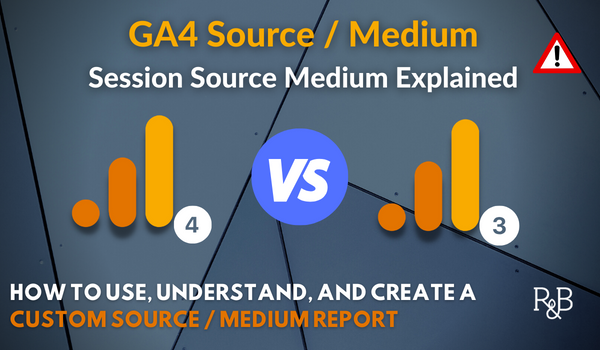Opening Secondary Dimensions in Google Analytics: Interpretation and Practical Use Situations Explored
Revealing the Influence of Additional Measurement in Google Analytics on Information Analysis and Insights
In the realm of data analytics, the application of secondary measurements within Google Analytics has actually arised as a crucial device for extracting deeper understandings and unraveling facility patterns that could or else continue to be obscured. By peeling off back the layers of main data sets, secondary dimensions provide a nuanced point of view that enhances the understanding of individual habits, internet site efficiency, and the effectiveness of marketing methods.
Discovering the Idea of Second Measurements
Additional measurements in Google Analytics supply additional insights by permitting users to analyze primary information together with a secondary quality. This attribute allows a much more detailed understanding of the key information by including another layer of details for evaluation. By integrating secondary dimensions, users can delve much deeper into the data and discover valuable relationships that may otherwise go unnoticed. By combining the primary data of website web traffic with additional measurements like demographics or habits, marketing professionals can get a much more comprehensive view of their audience and tailor their methods accordingly.
By exploring the different additional measurements offered in Google Analytics, users can open new insights and enhance their digital advertising initiatives. In significance, second measurements serve as a powerful device for improving information evaluation and driving workable results.
Enhancing Information Analysis With Additional Dimensions
Having developed the fundamental understanding of secondary dimensions in Google Analytics and their pivotal duty in data analysis, the emphasis now shifts in the direction of leveraging these additional features to boost the interpretation of analytics information (what is a secondary dimension in google analytics). By incorporating secondary measurements right into information analysis, experts can acquire deeper understandings into user actions, web site efficiency, and advertising performance

Furthermore, second measurements help in contextualizing key information metrics by offering additional layers of details. This contextualization aids in comprehending the 'why' behind the data trends, assisting experts make educated optimizations and decisions to enhance total efficiency. Ultimately, integrating additional dimensions improves the data analysis process, resulting in more purposeful insights and critical actions.
Uncovering Hidden Insights With Second Measurements
Exploring the midsts of analytics information with additional measurements reveals important understandings that would otherwise remain covered. By incorporating additional measurements pop over to these guys in Google Analytics, organizations can discover hidden patterns, patterns, and relationships that offer a more thorough understanding of individual actions and website performance. These extra layers of information allow analysts to dive much deeper right into the main dimensions, such as web traffic resources or touchdown pages, and Clicking Here gain a much more nuanced viewpoint on just how different variables connect with each various other.
Through making use of additional measurements, experts can segment and compare information throughout numerous measurements, allowing them to determine specific aspects that influence individual interaction, conversion prices, and total success metrics. By pairing the primary dimension of 'tool category' with the secondary measurement of 'age team,' online marketers can determine which age demographics favor accessing the internet site via mobile tools versus desktop computers. This degree of granularity encourages businesses to make data-driven choices and maximize their methods for much better outcomes. Eventually, discovering covert understandings via secondary dimensions boosts the deepness and accuracy of data evaluation, bring about even more educated decision-making and improved performance end results.
Leveraging Secondary Measurements for Actionable Analytics
Building upon the understandings introduced with second dimensions in Google Analytics, businesses can currently harness this enriched information landscape to drive workable analytics and tactical decision-making. By leveraging second dimensions, companies can dive deeper into their information to draw out beneficial patterns, fads, and correlations that might have previously gone unnoticed. This much deeper level of analysis allows companies to obtain a more extensive understanding of individual actions, campaign efficiency, and total site performance.
One key benefit of making use of secondary dimensions for actionable analytics is the ability to section information based on particular standards. This segmentation enables organizations to tailor their projects and approaches to different audience groups, bring about more targeted and efficient advertising and marketing initiatives - what is a secondary dimension in google analytics. Additionally, additional measurements give a more holistic sight of individual communications, making it possible for businesses to optimize their internet site content, style, and general individual experience
Maximizing Decision-Making With Additional Measurements
To enhance strategic decision-making in analytics, leveraging secondary dimensions in Google Analytics can offer an Going Here extra nuanced viewpoint on customer actions and project efficiency. By including secondary dimensions into information evaluation, organizations can delve deeper into the specifics of their website site visitors' communications and engagement patterns. This extra layer of details enables a more thorough understanding of just how different variables, such as demographics, devices, or traffic resources, effect essential performance indications.

Final Thought
In conclusion, making use of additional measurements in Google Analytics plays an essential duty in boosting information evaluation and uncovering concealed insights. By exploring this concept, one can obtain a deeper understanding of customer behavior and make notified decisions based upon actionable analytics. Leveraging second dimensions permits an extra detailed analysis of data and optimizes the effectiveness of decision-making processes.
